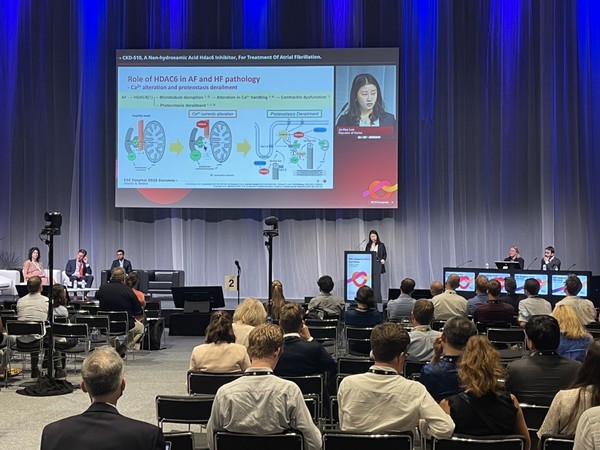Chong Kun Dang presented the preclinical research results of CKD-510, confirming the possibility of developing it as atrial fibrillation treatment at the 2022 European Society of Cardiology (2022 ESC) in Barcelona, Spain, from Aug. 26-29.

According to the company, CKD-510 is a next-generation drug substance with a platform technology that selectively inhibits histone deacetylase 6 (HDAC6). It is a heart disease treatment with a new mechanism that improves electrical and structural remodeling. In addition, it is a first-in-class drug developed as a non-ion channel blocker for the first time as an HDAC6 inhibitor.
The 2022 ESC selected CKD-510 as an oral presentation project for Basic and Translational Late-breaking Science, a system that provides an additional opportunity to present new results or results expected to significantly impact the field, even after the deadline for submitting materials to the conference.
According to preclinical results, the company found that CKD-510 reduced the burden of atrial fibrillation and improved left ventricular function by normalizing the movement of calcium ions (Ca2+) by inhibiting microtubule collapse in patients with atrial fibrillation.
In atrial fibrillation-induced animal experiments, CKD-510 increased acetylated α-tubulin and decreased the activity of calpain, a calcium-activated proteolytic enzyme.
The company also confirmed that the treatment improved AP duration at 90 percent repolarization (APD90) and decreased the atrial fibrillation inducibility and persistence.
In an atrial fibrillation patient model, the treatment improved action potential duration with the increase of acetylated α-tubulin.
Atrial fibrillation is a disease that causes irregular heartbeat due to the loss of regular contractions of the atria. It can occur with heart diseases such as coronary artery disease, hypertensive heart disease, and diastolic heart failure.
While ion channel blockers are currently used as therapeutic agents, there is an unmet need for more effective drugs due to insufficient efficacy and safety reasons, such as sinus bradycardia and ventricular arrhythmias. As a non-ion channel blocker, the company expects CKD-510 to become a new treatment concept that not only treats heart rhythm and heart rate control but also improves the root cause of diseases.
Based on the preclinical results, the company plans to research to confirm its potential as a therapeutic agent for various heart diseases and atrial fibrillation.
“The prevalence of various heart diseases, including atrial fibrillation, is rapidly increasing with the aging population, and the unmet need for related diseases is increasing,” a company official said. “Therefore, we plan to speed up development.”

